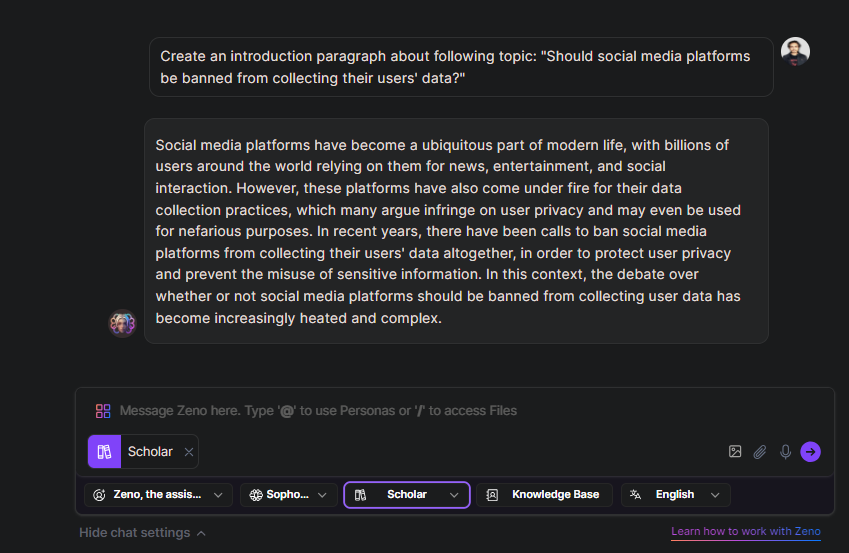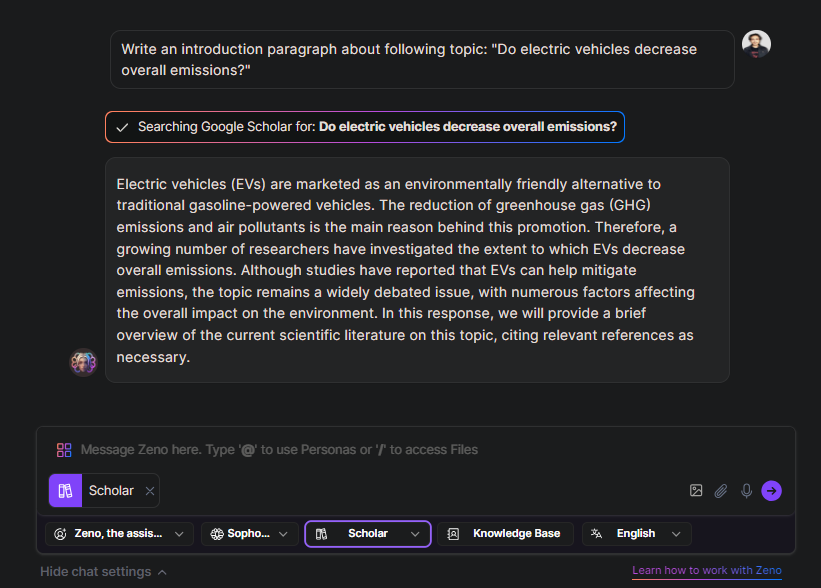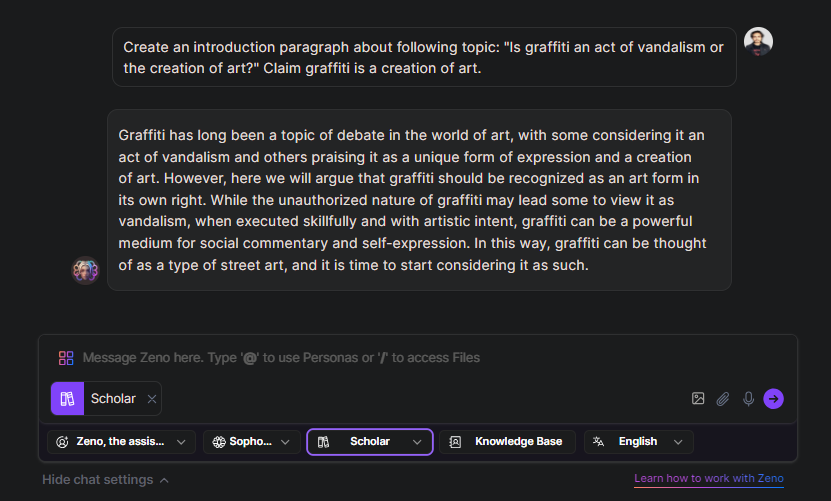A catchy and informative introduction is essential in academic writing, especially if you want your readers to have background information about your paper. However, writing an interesting and informative introduction can sometimes be a time-consuming and tiring process. If you don't know where to start when crafting an introduction, no need to worry - we've got you covered!
In this article, we will explain step by step what an introduction is in academic writing and how to write it!
Ready? Let's start!
TL; DR
- An introduction is a paragraph that provides information about your entire paper and aims to attract and inform the reader.
- Before writing an introduction or even starting your paper, you need to research academic sources.
- The first one or two sentences of an introduction paragraph should be a hook to attract the reader's attention.
- Afterwards, you need to prepare the reader for your argument by giving background information about your topic.
- Finally, you should state your argument about your topic with a thesis statement.
- If you are writing a longer paper, you can inform your readers about the map of your paper.
- If you are looking for an AI assistant to support you throughout your writing process, TextCortex is designed for you with its advanced features.
What is an Introduction in a research paper?
In any academic writing, including essays and research papers, an introduction is the first paragraph that the reader will encounter. This paragraph should both attract the reader's attention and give them the necessary information about the paper. In any academic paper, the introduction paragraph constitutes 10% of the paper's total word count. For example, if you are preparing a 3,000-word paper, your introduction paragraph should consist of approximately 300 words. You should also write sentences within these 300 words that will attract the reader's attention and provide them with information about the paper.
Importance of an Introduction Paragraph
The biggest function of an introduction paragraph is to prepare the reader for the author's thesis statement. A traditional introduction paragraph begins with a few sentences or questions that will catch the reader's attention. After attracting the reader's attention, necessary background information on the subject is given. Finally, the author explains to the readers what the whole paper is about by stating the thesis. A thesis statement is the final sentence that summarizes the main points of your paper and conveys your claim.
First Things First: Preliminary Research
When working on any academic writing type, it is essential to start by researching your topic thoroughly before beginning to type. What sets academic writing apart from other writing types is the requirement for it to be written using accurate information from reliable sources.
Researching academic sources can be a time-consuming and unnecessary process. One has to read through hundreds of pages, review dozens of articles and verify the accuracy of each source. However, if you're looking to reduce your workload and maximize efficiency by automating repetitive tasks such as literature review, ZenoChat is the perfect solution for you. With its web search feature, ZenoChat can use the entire internet as a data source. Additionally, by activating the "scholar" option of the ZenoChat web search feature, you can ensure that it only uses academic sources when generating output.
How to Create an Introduction for Academic Writing?
Creating an introduction paragraph that is interesting, informative, and conveys your thesis is an easier process than it seems. As long as you have sufficient information about your topic and an outline, you can write engaging introductions by following a few simple steps. Let's take a closer look at how to write an introduction for academic writing.
1-) Start with a Catchy Hook
Your first sentence is one of the factors that most influence a reader's decision to read your paper. This sentence determines the tone of your paper and attracts the reader's attention. For this reason, we recommend that you start your introduction paragraph with a strong and catchy hook sentence.
Pro Tips:
- Avoid long and complex sentences
- Use clear and concise sentences
- Write a sentence that will spark the reader's curiosity
- You can ask questions that will encourage the reader to read the remaining paragraph
- Avoid fact or overly broad sentences
- Avoid using dictionary definitions as your hook
2-) Give Background Information
After writing a strong hook sentence, you need to provide basic information about your topic so that the reader can understand what they will learn about when they read your paper. In this section, you can benefit from opinions that support or oppose your argument. Additionally, this section should refer to the body paragraphs of your writing.
Pro Tips:
- You can write a background information sentence for each body paragraph.
- The information here should be concise and compact
- Avoid talking about your evidence and results unless necessary.
3-) State Your Thesis
After attracting the reader's attention and providing background information, it is time to present your approach and argument towards the topic with a thesis statement. A thesis statement usually comprises one or two sentences and communicates the paper's argument to the reader. A well-written thesis statement should express your stance on the topic.
Pro Tips:
- Use clear and concise sentences
- Avoid merely stating a fact
- Claim your argument
4-) Tell Reader About Your Paper
Although you need to move on to body paragraphs after the thesis statement in short papers, it will be useful to add a few sentences that will guide the reader in your longer papers. This way, your readers can better understand which arguments they will encounter on which pages and the course of your paper. That leads the reader to clearly understand and follow your content.
Let’s Wrap it Up
Writing an interesting and informative introduction is usually a long process that requires a lot of rewriting. You may need to rewrite a sentence dozens of times so that your words and sentences clearly describe your paper and argument. Fortunately, you can generate state-of-the-art introductions using AI tools and use them with a little editing.
When it comes to text generation, paraphrasing, and grammar & spelling checking, TextCortex is the way to go with its advanced LLMs and customization options. With TextCortex, you can generate all writing types, including introduction, from scratch, rewrite your existing texts, change their tone of voice, or fix their grammar. TextCortex is available as a web application and browser extension. The TextCortex browser extension is integrated with 30,000+ websites and apps. So, you can complete your AI-driven writing tasks anywhere and anytime.
Let's examine a few sample introductions generated by TextCortex.
Example Introduction #1
Topic:
“Should social media platforms be banned from collecting their users' data?”
Output:

Example Introduction #2
Topic:
“Do electric vehicles decrease overall emissions?”
Output:

Example Introduction #3
Topic:
“Is graffiti an act of vandalism or the creation of art?”
Output:


%20(3).png)
%20(6).png)
%20(5).png)
%20(4).png)